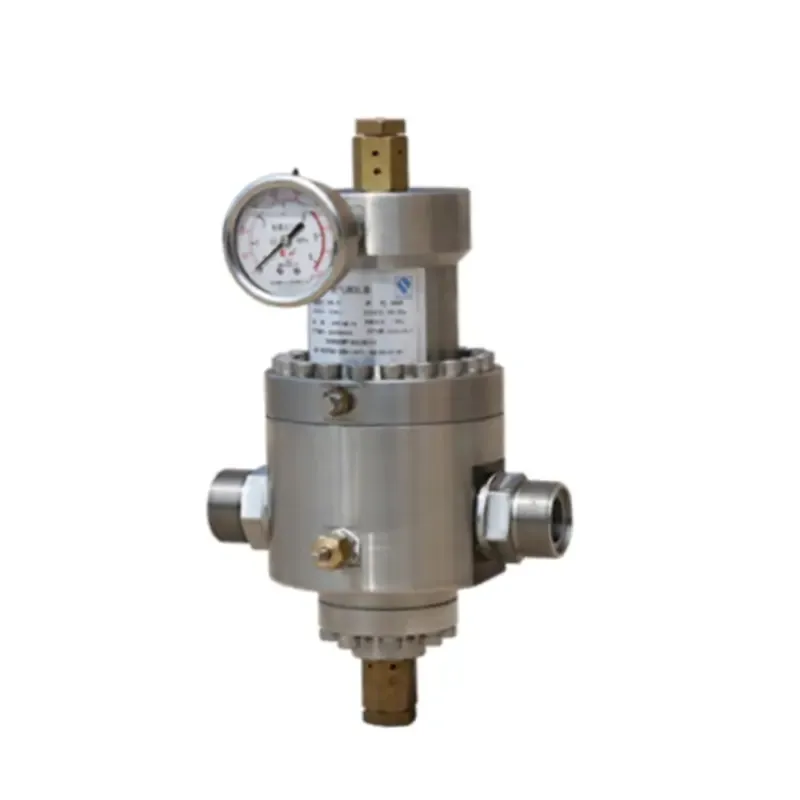
Jul . 10, 2024 15:50
Back to list
Gas regulator key component for controlling and maintaining gas pressure in systems.
The gas regulator is a crucial component in any gas system, as it helps to control the flow and pressure of gas to ensure safe and efficient operation. Whether it's for a residential heating system, a commercial kitchen, or an industrial plant, a properly functioning gas regulator is essential for the overall performance and safety of the system.
Gas regulators come in various types and sizes, depending on the specific application and requirements. They are typically installed in-line with the gas supply line and are designed to reduce the high pressure of the incoming gas to a safe and manageable level before it reaches the appliances or equipment that use the gas. This ensures that the gas burns efficiently and that there is no risk of over-pressurization or leaks.
One of the key functions of a gas regulator is to maintain a constant outlet pressure, regardless of fluctuations in the inlet pressure or flow rate. This is achieved through a diaphragm mechanism inside the regulator that responds to changes in pressure by adjusting the opening of the gas valve. By keeping the pressure within a tight range, the regulator ensures that the gas appliances operate reliably and consistently.
In addition to pressure regulation, gas regulators also include safety features to prevent over-pressurization and gas leaks. For example, most regulators are equipped with a relief valve that automatically releases excess pressure if it exceeds a certain threshold

gas regulator. This helps to protect the system from damage and prevent dangerous situations such as explosions or fires. Proper maintenance and regular inspection of gas regulators are essential to ensure their continued safe and efficient operation. This includes checking for signs of wear or damage, such as leaks, corrosion, or improper adjustment. It is also important to test the regulator periodically to verify that it is functioning correctly and within the specified pressure range. When selecting a gas regulator for a specific application, it is important to consider factors such as the type of gas being used, the flow rate and pressure requirements, and the operating conditions. It is also important to choose a regulator that is compatible with the other components of the gas system and meets industry standards and regulations. In conclusion, the gas regulator plays a critical role in ensuring the safe and efficient operation of gas systems in a wide range of applications. By controlling the pressure and flow of gas, regulating gas regulators help to protect equipment, prevent accidents, and promote energy efficiency. Proper selection, installation, and maintenance of gas regulators are essential to maximize their performance and ensure the safety of gas systems.

gas regulator. This helps to protect the system from damage and prevent dangerous situations such as explosions or fires. Proper maintenance and regular inspection of gas regulators are essential to ensure their continued safe and efficient operation. This includes checking for signs of wear or damage, such as leaks, corrosion, or improper adjustment. It is also important to test the regulator periodically to verify that it is functioning correctly and within the specified pressure range. When selecting a gas regulator for a specific application, it is important to consider factors such as the type of gas being used, the flow rate and pressure requirements, and the operating conditions. It is also important to choose a regulator that is compatible with the other components of the gas system and meets industry standards and regulations. In conclusion, the gas regulator plays a critical role in ensuring the safe and efficient operation of gas systems in a wide range of applications. By controlling the pressure and flow of gas, regulating gas regulators help to protect equipment, prevent accidents, and promote energy efficiency. Proper selection, installation, and maintenance of gas regulators are essential to maximize their performance and ensure the safety of gas systems.
Latest news
-
Safety Valve Spring-Loaded Design Overpressure ProtectionNewsJul.25,2025
-
Precision Voltage Regulator AC5 Accuracy Grade PerformanceNewsJul.25,2025
-
Natural Gas Pressure Regulating Skid Industrial Pipeline ApplicationsNewsJul.25,2025
-
Natural Gas Filter Stainless Steel Mesh Element DesignNewsJul.25,2025
-
Gas Pressure Regulator Valve Direct-Acting Spring-Loaded DesignNewsJul.25,2025
-
Decompression Equipment Multi-Stage Heat Exchange System DesignNewsJul.25,2025

